Demand for camera film has been in decline since the 1990s, which has drastically slowed down production. Few places stock it, and what you can find is becoming more and more expensive. For those of us who have stuck with analog photography, sourcing film can be a nightmare. That’s why many are experimenting with expired film. Not only is it cheaper, but shooting with expired film can also yield some fantastic results. Let’s go through some tips on how to shoot with expired film for great results. First, let’s learn a little more about expired film.
What is Expired Film and Why Is It Useful?
Much like food, film has an expiry date. Thankfully, it doesn’t go mouldy like a block of cheese or curdle like milk! But it does have a limited shelf life. A roll of film usually has an expiration date of two years after the date of manufacture. But it’s more of a guideline than an exact date. A film’s decline will be gradual, so don’t be quick to throw them out. Film is made up of thin strips of plastic coated with a chemical emulsion. This emulsion contains silver halides that react when exposed to light, which creates the final photo. For color film, the silver particles are mixed with colored dyes. Over time the chemicals on the film lose their potency and start to deteriorate. The silver halides in the films’ emulsion degrade and lose their sensitivity. As a result, colors will lose their vibrancy, and contrasts will fade and grain increases. Eventually, expired film becomes foggy and unusable. Much like food, you can prolong your film’s shelf life by keeping it in the fridge. Sunlight, heat radiation and humidity can all affect the life span of your film. That’s why keeping it in a cool, dry place is recommended. But, the effects caused by the degradation of film are actually an exciting prospect for film photographers. Using expired film adds an extra element of excitement. Many photographers specifically seek out these effects. It’s impossible to know how far gone a roll of film might be. This means every roll is different, and you never quite know what you’re going to get. Some will give you strong purple hues, while others may produce greener tones. You could achieve a similar look to your film by cross-processing C-41 negative film into E-6 slide film.
1. Not All Film Ages at the Same Speed
Time doesn’t affect all types of film equally. The period of degradation can vary depending on the type of film you’re using. Films with a higher ISO will degrade at a fast pace than those with a lower ISO. The faster the film speed, fast the degradation. Slide film will deteriorate much quicker than standard negative film. It is also less responsive to the compensation techniques we’ll mention below. Many photographers will tell you to stay clear of expired color slide film. Black and white film has a longer shelf life than standard color canisters. As it uses a simpler emulsion with fewer silver halides, the rate of deterioration is much slower. You might experience more grain, but black and white film tends to be more grainy anyway. Good quality black and white film will work well for years and years.
2. How to Get Your Hands on Expired Film
You can start your search at home. Maybe your parents have some old rolls from years ago that they never used. You can also ask any photography friends you have. If they’ve changed to digital, maybe they have film that they no longer need. The shop where you usually buy film is another place to ask. They might have some unsold film stock which they can’t shift. They’ll be more than happy for you to take it off their hands. We find the best place to look for expired film is online. There are sellers on eBay that sell bundles of expired rolls for discount prices. Sellers can also be found on many online photography forums. Another tip is to buy in bulk. It will work out cheaper in the long run and will also allow you to do more test shots. You can see what effect one year has on a roll of Kodak 200, then try again with another roll. Just remember, no two films will be exactly the same.
3. Use Your Fridge to Store Film
The fridge may seem like a strange place to store film, but it really is the best. The refrigerator isn’t always necessary. But if you live in a country with a hot and humid climate, it is the best place. Expired film is no different. In fact, you might be better off putting it in the freezer. The degradation process may have already started, so you need to slow that down as much as possible. Before putting them in the fridge or freezer, place them in an air-tight container. You don’t want them to get wet or damaged. If any water gets into the canister, it will wash the emulsion off the film.
4. Use One Roll to Test Before You Shoot
When using expired film, use one roll as a test. If you’ve bought a bundle pack of expired films, it’s best to test one out before you have any real shooting to do. If there’s a specific event you want to capture, you can take one roll out for a test before the big day comes. This is a good idea if you have many similar film rolls in the bundle. Using a test roll will give you a good idea of how degraded the film is and what effects you can expect. But remember, no two rolls will be exactly the same. Each set of developed photos will be unique, which is part of the fun!
5. Shoot in Strong Light to Capture More Detail
As the emulsion deteriorates, the film becomes less sensitive to light. This means you’ll need more light than you might think you do. The easiest way to solve this is to shoot outdoors in broad daylight. If it’s a sunny day, you won’t have to worry about a lack of light. If the film you’re using isn’t too far past its expiration date and the environment is well lit, you can treat it as if it were a normal film. You might experience a bit more grain, but the quality will remain high. The problems arise when light is in short supply. If the conditions are dark, or if there are large contrast areas, you will encounter problems. More grain, of course, but also a loss of detail and vitality. Using a flash is another solution if you know natural light isn’t going to be plentiful. You can use the flash when you otherwise wouldn’t need to. But you can expect more grain in your final images with this technique.
6. Use Pull Processing to Add More Light
As film’s sensitivity declines, you can compensate by tricking your camera into thinking it’s using a film with a lower ISO. This type of sensitivity compensation is called Pull Processing. Push processing is also possible, but with expired film you need more light rather than less. When adjusting the ISO in this way, there is a general rule of thumb. For each decade past expiry, lower the ISO by one stop. If the film has 400 ISO and is ten years out of date, drop it down to 200. This can be a handy tip. But not many older film cameras have ISO settings below 100, so it is limited. It’s definitely not an exact science. That’s why it’s best to test and experiment as much as you can. Also, try to use the same camera. Using a different camera can affect your results.
7. Try Exposure Bracketing to Help Test Expired Film
Bracketing your exposures can help you nail down the f-stops you need for certain conditions. This is a great way to use a test roll of expired film. To bracket your images, you can take three shots of the same scene. The first shot can be with the standard exposure setting for that environment. The second can be one f-stop down (-1), and the third will be one stop above (+1). Once developed, you’ll have three images from which you can decide the best settings for that type of film. Just remember to take notes. If you don’t have time for bracketing, you can just start shooting. A general rule when using expired film is that it’s better to be over-exposed than under-exposed. It’s better to risk too much light than too little. But be reasonable. Don’t go crazy with the light, as you might end up with nothing but white photos.
Conclusion
Photography with expired film can be great fun. If you buy film that has only recently expired, you can treat it as if it were new. This is a cheaper way of purchasing film. But it’s not just about saving money. Using expired film is a form of experimentation that can produce some excellent results. Do keep in mind that an element of risk when using expired film. The photos may not come out as you expect, and there is no way of telling how degraded a roll of film is before you use it. There is always the risk that the film was too far gone, and you end up with nothing but splodges and grain. Take your time and test the films. Experiment with your camera and the compensation techniques. Remember to expect the unexpected. Some of the results can be pure magic.
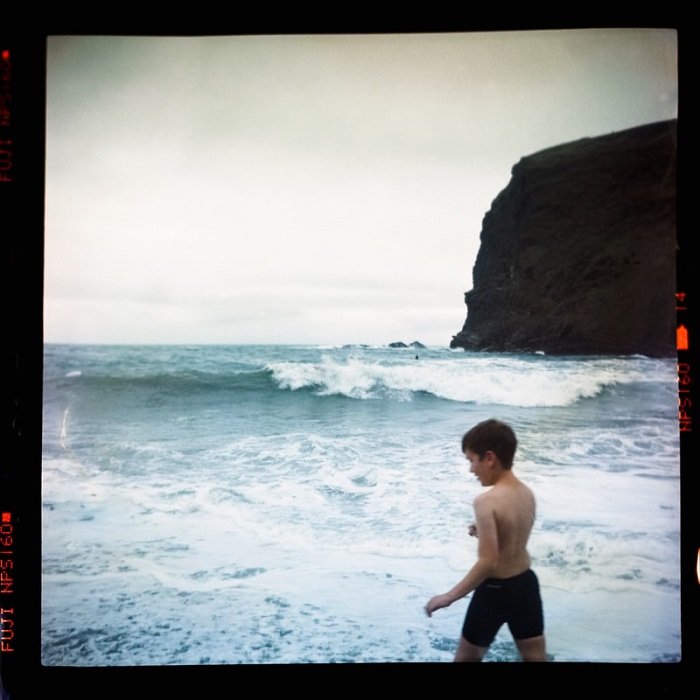


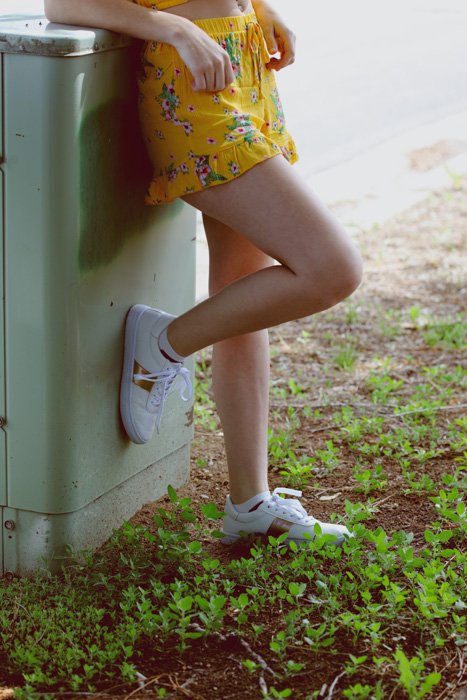
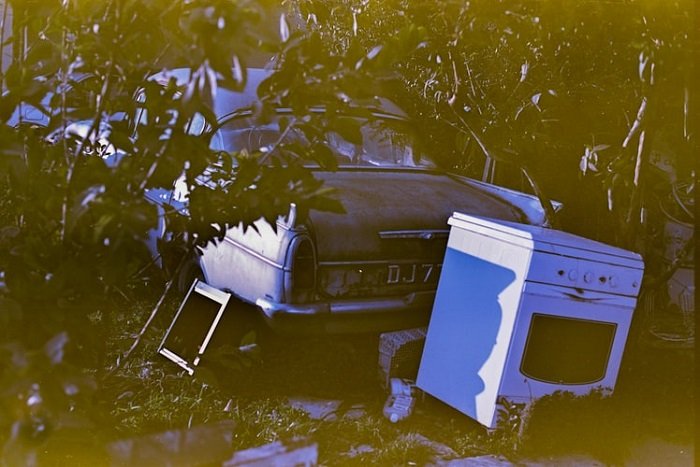
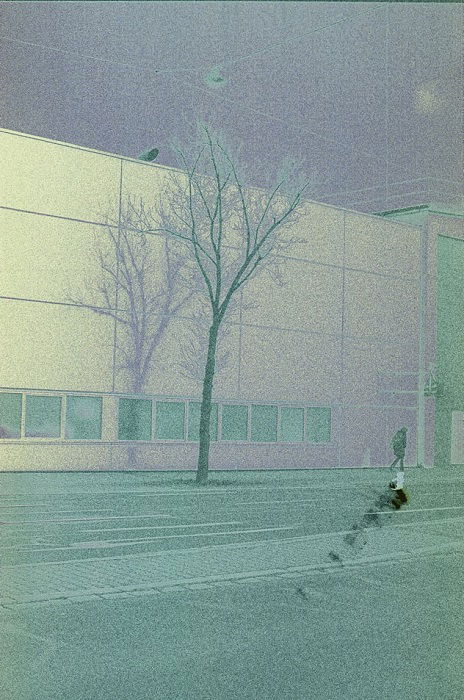
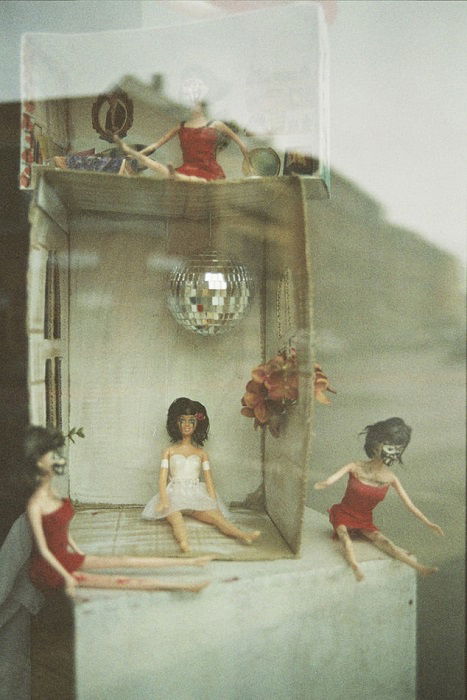
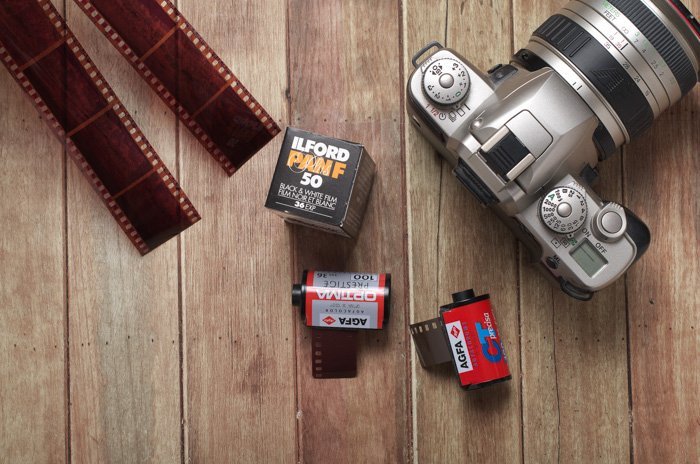
title: “How To Shoot With Expired Film For Creative Results " ShowToc: true date: “2023-01-14” author: “William Rock”
Demand for camera film has been in decline since the 1990s, which has drastically slowed down production. Few places stock it, and what you can find is becoming more and more expensive. For those of us who have stuck with analog photography, sourcing film can be a nightmare. That’s why many are experimenting with expired film. Not only is it cheaper, but shooting with expired film can also yield some fantastic results. Let’s go through some tips on how to shoot with expired film for great results. First, let’s learn a little more about expired film.
What is Expired Film and Why Is It Useful?
Much like food, film has an expiry date. Thankfully, it doesn’t go mouldy like a block of cheese or curdle like milk! But it does have a limited shelf life. A roll of film usually has an expiration date of two years after the date of manufacture. But it’s more of a guideline than an exact date. A film’s decline will be gradual, so don’t be quick to throw them out. Film is made up of thin strips of plastic coated with a chemical emulsion. This emulsion contains silver halides that react when exposed to light, which creates the final photo. For color film, the silver particles are mixed with colored dyes. Over time the chemicals on the film lose their potency and start to deteriorate. The silver halides in the films’ emulsion degrade and lose their sensitivity. As a result, colors will lose their vibrancy, and contrasts will fade and grain increases. Eventually, expired film becomes foggy and unusable. Much like food, you can prolong your film’s shelf life by keeping it in the fridge. Sunlight, heat radiation and humidity can all affect the life span of your film. That’s why keeping it in a cool, dry place is recommended. But, the effects caused by the degradation of film are actually an exciting prospect for film photographers. Using expired film adds an extra element of excitement. Many photographers specifically seek out these effects. It’s impossible to know how far gone a roll of film might be. This means every roll is different, and you never quite know what you’re going to get. Some will give you strong purple hues, while others may produce greener tones. You could achieve a similar look to your film by cross-processing C-41 negative film into E-6 slide film.
1. Not All Film Ages at the Same Speed
Time doesn’t affect all types of film equally. The period of degradation can vary depending on the type of film you’re using. Films with a higher ISO will degrade at a fast pace than those with a lower ISO. The faster the film speed, fast the degradation. Slide film will deteriorate much quicker than standard negative film. It is also less responsive to the compensation techniques we’ll mention below. Many photographers will tell you to stay clear of expired color slide film. Black and white film has a longer shelf life than standard color canisters. As it uses a simpler emulsion with fewer silver halides, the rate of deterioration is much slower. You might experience more grain, but black and white film tends to be more grainy anyway. Good quality black and white film will work well for years and years.
2. How to Get Your Hands on Expired Film
You can start your search at home. Maybe your parents have some old rolls from years ago that they never used. You can also ask any photography friends you have. If they’ve changed to digital, maybe they have film that they no longer need. The shop where you usually buy film is another place to ask. They might have some unsold film stock which they can’t shift. They’ll be more than happy for you to take it off their hands. We find the best place to look for expired film is online. There are sellers on eBay that sell bundles of expired rolls for discount prices. Sellers can also be found on many online photography forums. Another tip is to buy in bulk. It will work out cheaper in the long run and will also allow you to do more test shots. You can see what effect one year has on a roll of Kodak 200, then try again with another roll. Just remember, no two films will be exactly the same.
3. Use Your Fridge to Store Film
The fridge may seem like a strange place to store film, but it really is the best. The refrigerator isn’t always necessary. But if you live in a country with a hot and humid climate, it is the best place. Expired film is no different. In fact, you might be better off putting it in the freezer. The degradation process may have already started, so you need to slow that down as much as possible. Before putting them in the fridge or freezer, place them in an air-tight container. You don’t want them to get wet or damaged. If any water gets into the canister, it will wash the emulsion off the film.
4. Use One Roll to Test Before You Shoot
When using expired film, use one roll as a test. If you’ve bought a bundle pack of expired films, it’s best to test one out before you have any real shooting to do. If there’s a specific event you want to capture, you can take one roll out for a test before the big day comes. This is a good idea if you have many similar film rolls in the bundle. Using a test roll will give you a good idea of how degraded the film is and what effects you can expect. But remember, no two rolls will be exactly the same. Each set of developed photos will be unique, which is part of the fun!
5. Shoot in Strong Light to Capture More Detail
As the emulsion deteriorates, the film becomes less sensitive to light. This means you’ll need more light than you might think you do. The easiest way to solve this is to shoot outdoors in broad daylight. If it’s a sunny day, you won’t have to worry about a lack of light. If the film you’re using isn’t too far past its expiration date and the environment is well lit, you can treat it as if it were a normal film. You might experience a bit more grain, but the quality will remain high. The problems arise when light is in short supply. If the conditions are dark, or if there are large contrast areas, you will encounter problems. More grain, of course, but also a loss of detail and vitality. Using a flash is another solution if you know natural light isn’t going to be plentiful. You can use the flash when you otherwise wouldn’t need to. But you can expect more grain in your final images with this technique.
6. Use Pull Processing to Add More Light
As film’s sensitivity declines, you can compensate by tricking your camera into thinking it’s using a film with a lower ISO. This type of sensitivity compensation is called Pull Processing. Push processing is also possible, but with expired film you need more light rather than less. When adjusting the ISO in this way, there is a general rule of thumb. For each decade past expiry, lower the ISO by one stop. If the film has 400 ISO and is ten years out of date, drop it down to 200. This can be a handy tip. But not many older film cameras have ISO settings below 100, so it is limited. It’s definitely not an exact science. That’s why it’s best to test and experiment as much as you can. Also, try to use the same camera. Using a different camera can affect your results.
7. Try Exposure Bracketing to Help Test Expired Film
Bracketing your exposures can help you nail down the f-stops you need for certain conditions. This is a great way to use a test roll of expired film. To bracket your images, you can take three shots of the same scene. The first shot can be with the standard exposure setting for that environment. The second can be one f-stop down (-1), and the third will be one stop above (+1). Once developed, you’ll have three images from which you can decide the best settings for that type of film. Just remember to take notes. If you don’t have time for bracketing, you can just start shooting. A general rule when using expired film is that it’s better to be over-exposed than under-exposed. It’s better to risk too much light than too little. But be reasonable. Don’t go crazy with the light, as you might end up with nothing but white photos.
Conclusion
Photography with expired film can be great fun. If you buy film that has only recently expired, you can treat it as if it were new. This is a cheaper way of purchasing film. But it’s not just about saving money. Using expired film is a form of experimentation that can produce some excellent results. Do keep in mind that an element of risk when using expired film. The photos may not come out as you expect, and there is no way of telling how degraded a roll of film is before you use it. There is always the risk that the film was too far gone, and you end up with nothing but splodges and grain. Take your time and test the films. Experiment with your camera and the compensation techniques. Remember to expect the unexpected. Some of the results can be pure magic.







